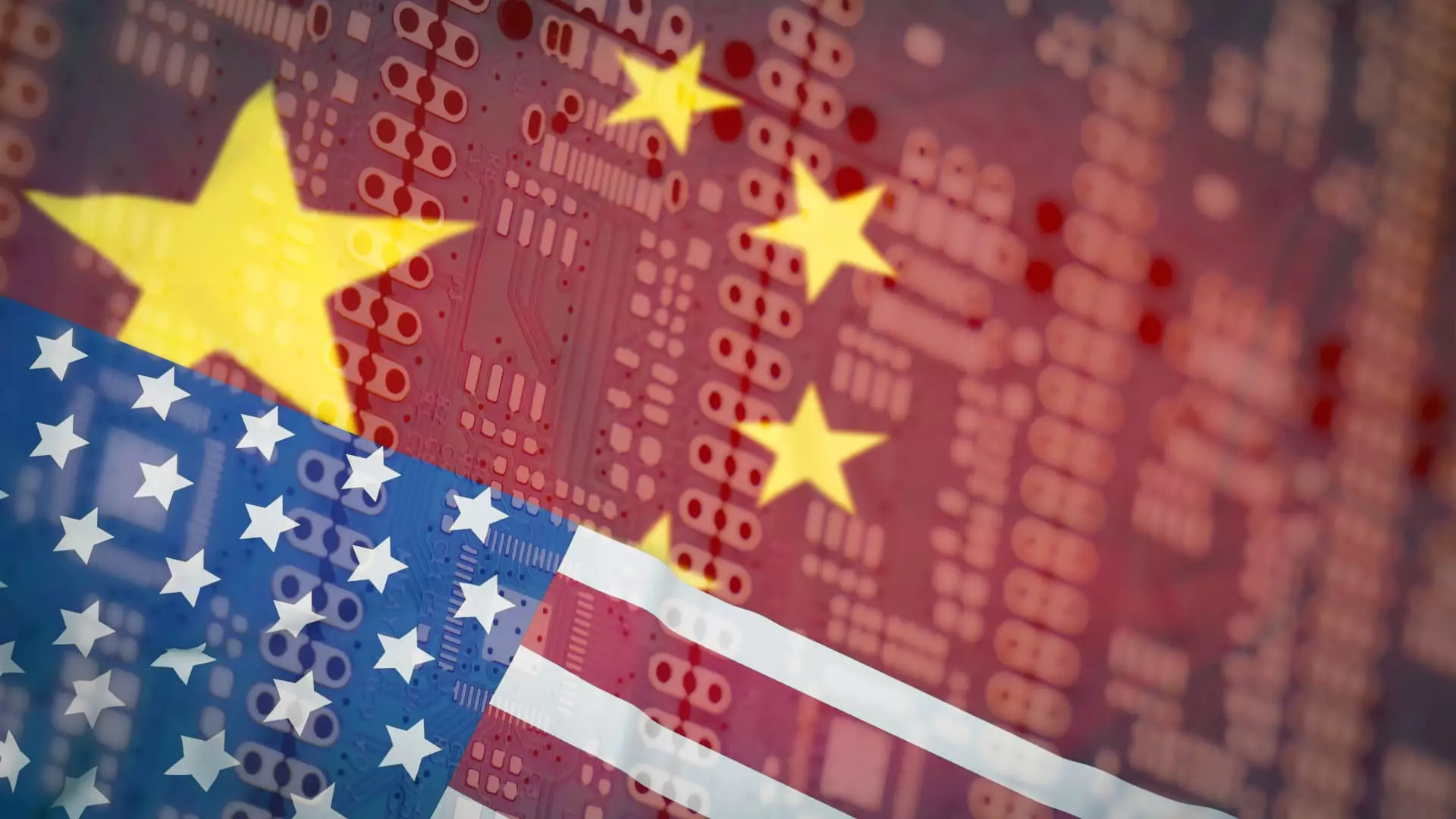In the rapidly evolving landscape of artificial intelligence (AI), companies like Tencent and Baidu stand at a crossroads, wrestling with existential challenges presented by U.S. semiconductor export restrictions. The very fabric of innovation is being woven with threads of scarcity and resilience, forcing these tech giants to adopt unconventional strategies to maintain their footing in the global technology arena. While the U.S. seems intent on curtailing Chinese advancements, these firms have demonstrated a remarkable capability to adapt and thrive within constrained circumstances. The question that looms large is not just about immediate strategies but about the broader implications of this technological cat-and-mouse game.
Tencent: A Model of Strategic Invention
Tencent has taken a bold approach to mitigate the impact of chip shortages. Martin Lau, the company’s president, divulged insights into their resilient stockpiling of chips. Unlike American firms that chase after the latest hardware, Tencent emphasizes optimizing existing resources. Their perspective marks a striking departure from the common narrative that quantity always trumps quality in technology acquisition. Lau provocatively asserts that a concentrated group of Graphics Processing Units (GPUs) can yield impressive results without the need for massive clusters. This counterintuitive approach underscores the innovation potential inherent in careful resource management.
The emphasis placed on “software optimization” allows Tencent to stretch its technological capabilities further, lessening dependency on new chip acquisitions. This notion carries critical significance; as the AI landscape expands, it will likely be the companies that innovate around existing limitations that will secure competitive advantages. In Lau’s view, it’s not just about brute force; it’s a cerebral challenge. The careful re-examination of priorities could foster a culture of resourceful ingenuity, paving the way for smarter, not just harder, work.
Baidu: Redefining Success with a ‘Full-Stack’ Approach
As the leading search engine, Baidu presents a contrasting yet equally ambitious strategy. Dou Shen, the president of Baidu’s AI cloud division, stated that the company’s “full-stack” capabilities are its secret weapon in an era defined by geopolitical tension. What’s compelling here is the recognition that advancements can be made even in the absence of cutting-edge chips. While many in the tech world would focus on hardware as a cornerstone of success, Baidu champions the effectiveness of having complete control over its technology. This self-sufficiency not only cultivates innovation but positions Baidu as a formidable competitor, as reliance on external sources diminishes.
The assertion that domestic self-sufficiency in semiconductors could provide a robust long-term foundation for AI innovation speaks volumes about Baidu’s strategic vision. It outlines a narrative that goes beyond mere survival; it suggests a future where China’s tech ecosystem can flourish independently, staving off the alienating hand of restrictions. The drive toward creating home-grown solutions reflects a broader ideology: in the face of external pressure, true innovation often emerges.
The Bigger Picture: An Ecosystem on the Brink
While China has made noteworthy strides in its semiconductor capabilities, the specter of being behind the U.S., particularly in high-performance GPUs, remains a contentious point. Analysts like Gaurav Gupta underscore that China’s ambitions should not be underestimated; the progress made in developing a robust semiconductor ecosystem reveals an ornately intricate playbook of strategic maneuvering. Perhaps the greatest lesson here lies in the necessity of resilience. The narrative that China is merely reactive overlooks the proactive strides they are making in research and development.
The development of a domestic semiconductor ecosystem, from design to manufacturing, hints at a long-term strategy that alters the competitive landscape. As the U.S. tightens the screws on technology exports, the question of whether restrictive measures can genuinely stifle innovation looms large. Are we witnessing a futile attempt to halt progress, or are these restrictions a catalyst for innovation that we haven’t yet fully realized? All those involved should approach the issue with the awareness that innovation has a curious way of flourishing under adversity.
A Call to Action: Embracing Innovation over Restraint
As the U.S. presidential administration grapples with shaping technology policy amidst rising global tensions, it would do well to reconsider its restrictive posture. The widespread call from executives, including Nvidia’s CEO for the easing of export restrictions, points toward a critical juncture. The assertion that the restrictions are doing more harm to American businesses than to Chinese firms cannot be dismissed lightly; it emphasizes the responsibility of corporations to initiate dialogues that encourage an open exchange of ideas and technologies.
In this high-stakes drama of global technological advancement, it is innovation that should lead the narrative, rather than political posturing. Resilience, resourcefulness, and an unyielding spirit of innovation must be embraced if we are to foster a future that includes thriving ecosystems for all players involved, especially as the demands of AI continue to evolve in complexity and scale.

